Vincent van Gogh Art Project
Vincent van Gogh's work is instantly recognisable just from his brushstrokes. In his painting The Starry Night, each individual brushstroke is visible. These blocky lines are the key to creating a van Gogh-inspired painting.
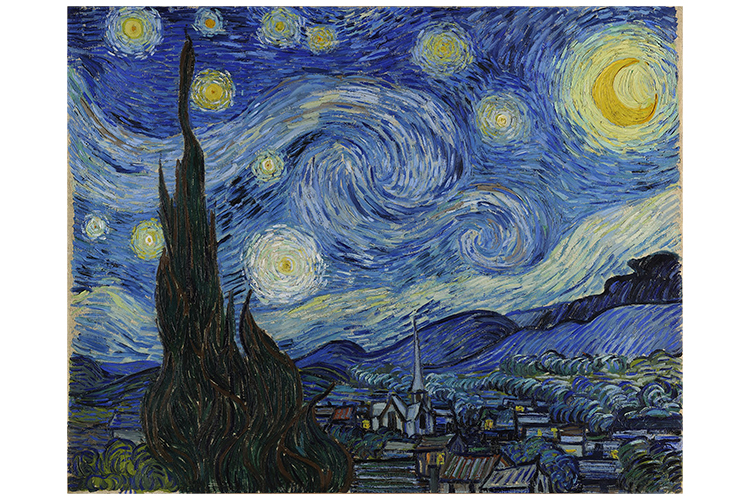
In this project, we will guide you through painting this scene in its characteristic, style step by step.
To begin, print off a copy of The Starry Night and use the Mammoth Memory grid method to draw a rough guide of the image onto your canvas.
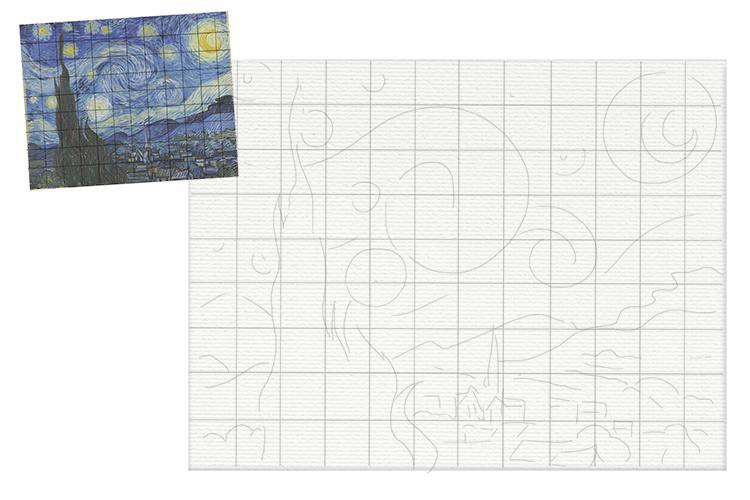
Once you have your guide in place, look at the reference image and decide on a base colour for each section. You will notice on the original that below most of the chunky brushstrokes there is a block colour that shows through.
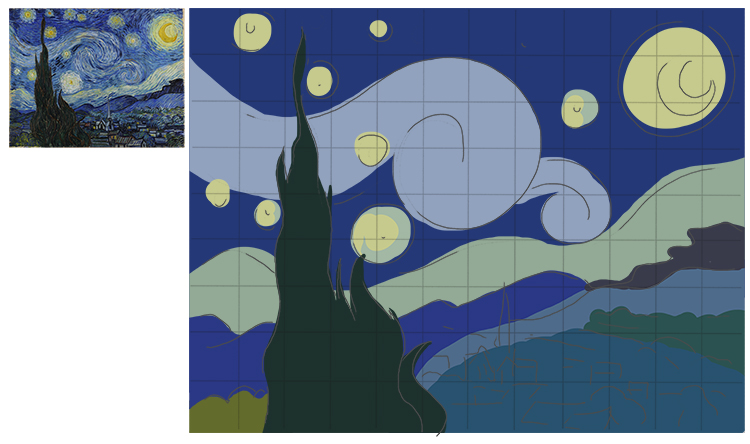
The colour blocking will help your eye focus on the area you are working on in relation to the ones around it. It also allows you to build up darker and lighter tones on top of it in order to recreate van Gogh's style.
Before you begin, practise these small track lines with a small brush. Try tilting the brush to one side and dabbing it onto the canvas instead of dragging a line with it.

You can now begin creating marks similar to the ones you see in van Gogh's work.
Start with the sky. Applying paint on top of your dried background adds to the sense of depth in a painting.
When painting the sky, think about the direction of the rolling clouds, following the direction of the swirls with your brushstrokes. You will also see in the original that the strokes go around the outside of the stars and moon rather than jutting out from them. This makes them appear to glow.
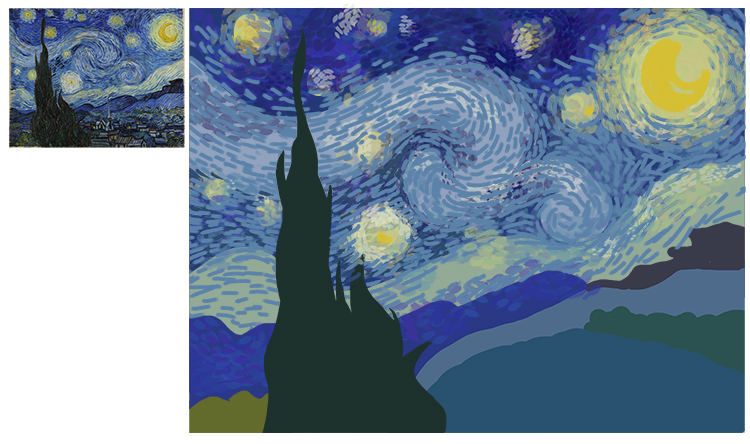
The more small track lines you put down, the better.
Once you are happy with the sky, you can add detail to the foreground. Work from the lightest areas first, then the darker blues and then the black. The black tree at the front will then be the top layer of paint, and appear closest to the viewer.
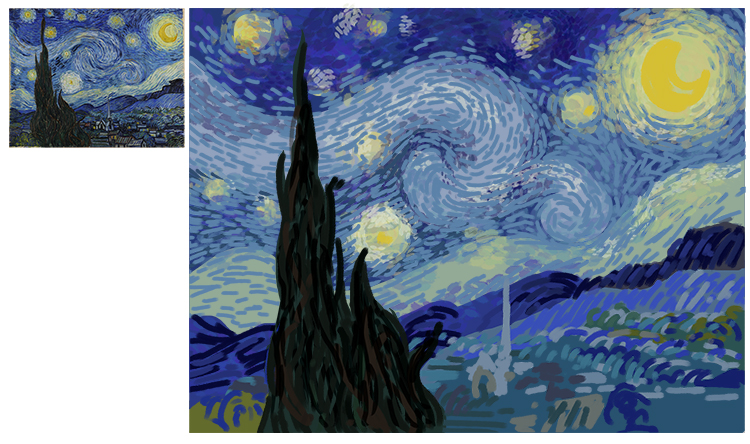
Now you can add the outlines and rough details to the village and hills.
You can also add hints of light to the windows of the buildings.
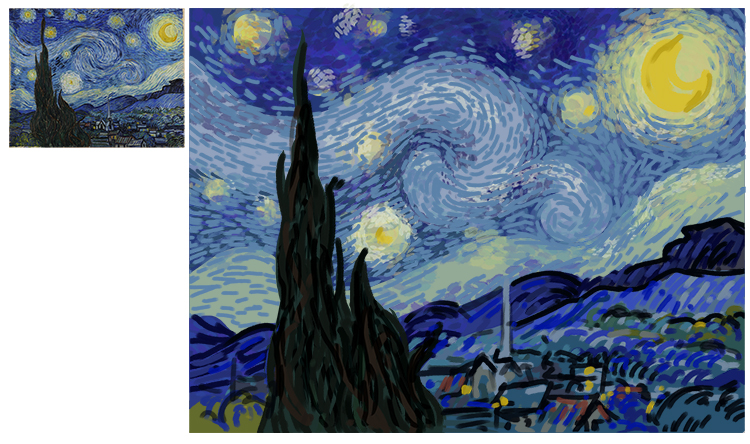
For such a simple process, you can achieve a detailed representation of a van Gogh-style painting.
Vincent van Gogh.
Vincent van Gogh Art Project 2
The recognisable long brushstrokes van Gogh used can be represented in many ways.
Rather than using paint, this exercise uses coloured paper.
To start, decide on an image to base your work on. Choose a painting with lots of visible brushstrokes and an array of colour: this will work well for the style of image we are going to make. We have chosen to use Van Gogh's Wheatfield with Crows painting as it shows clearly the types of marks he used:
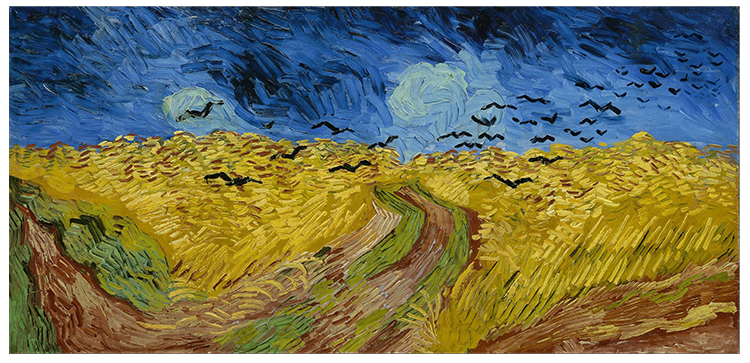
To start the process, find sheets of coloured paper in different tones. You could also paint sheets of paper in various colours you see in the painting and allow them to dry.
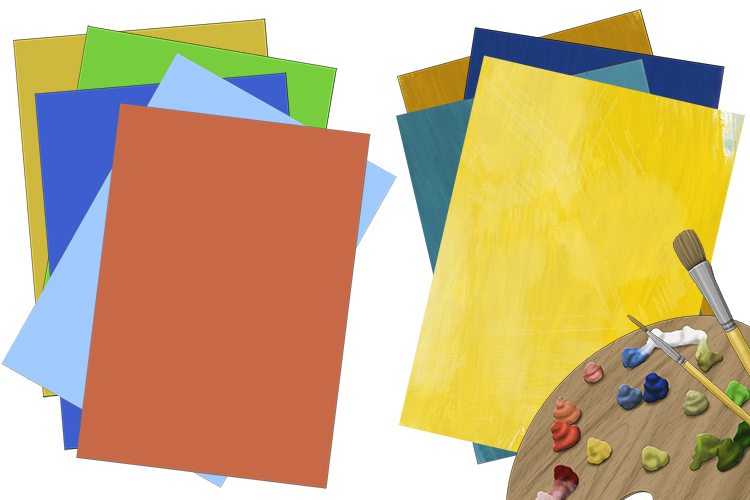
Once you have a selection of colours to use, cut up the paper into small strips. Keep the piles of each coloured paper separate – this will be your colour palette.

Now you have the colours ready you can prepare the paper you are going to work on.
Mark out on paper the borders of the image and any guidelines you wish to work on. The painting we are copying is simple, but if you are using a more difficult one, you can use the Mammoth Memory grid method to draw up a plan.
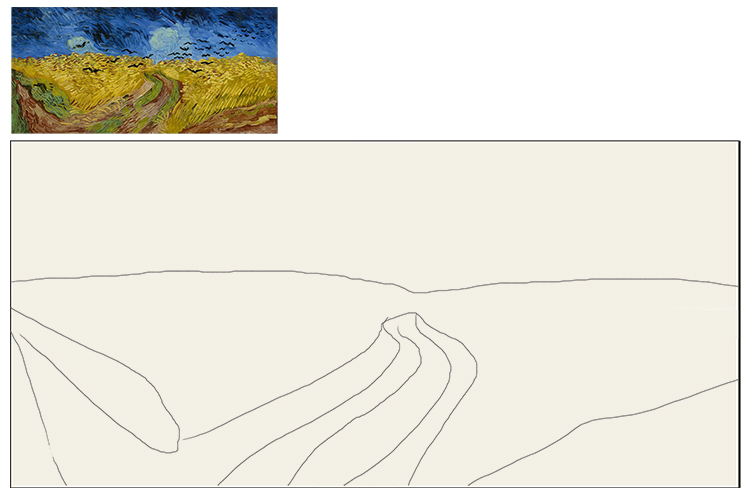
To help you along, paint a block colour in each of the sections. This will act as a background to avoid white paper being visible, but also add depth to the final image and add to the overall effect. The painting does not have to be too neat, it will only form a background.

The fun part can now start. Using the background as a guide, start sticking the strips of paper onto the paper. Look at the direction of van Gogh's brushstrokes to help you decide which way round to stick your paper strips.
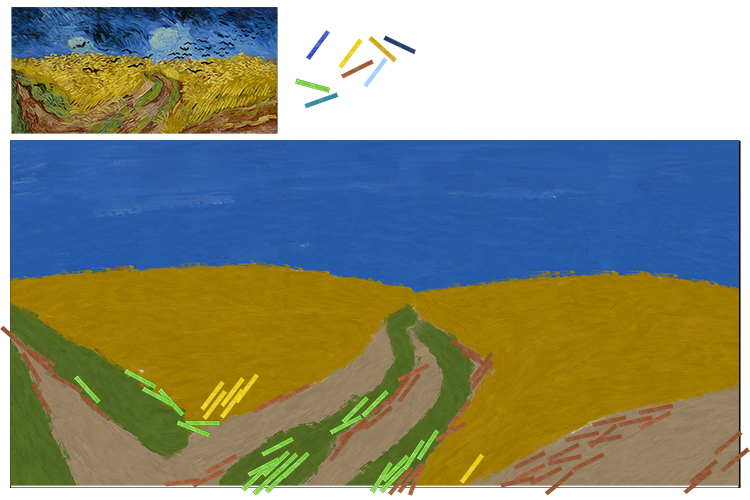
Don't worry about any strips hanging off the side of your workspace, they can be cut off at the end.
Keep applying the strips until your image is full.

Once you are happy with the appearance of the strips, you can add in any black details with paint and a brush. In our image, the black crows are the element that ties the image together as a whole.
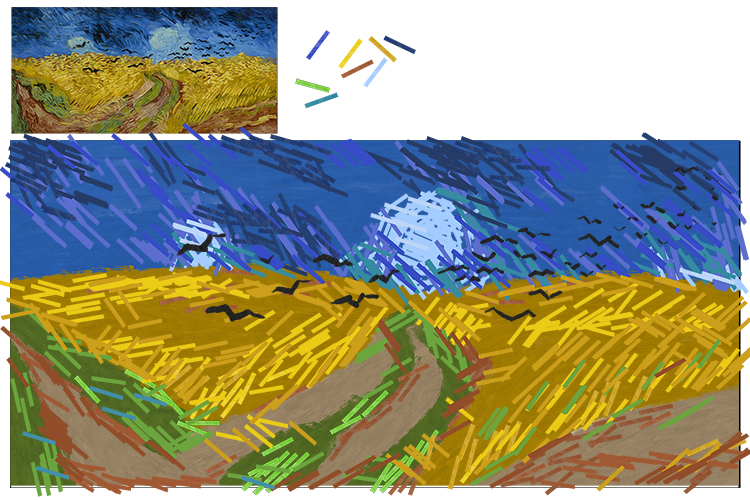
Cut around the edges of your image to remove any strips of paper that may be hanging over the edge. Your image is now complete.
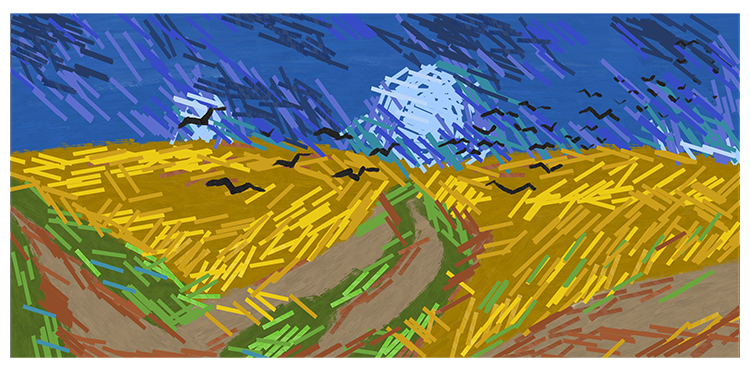
Vincent van Gogh.




